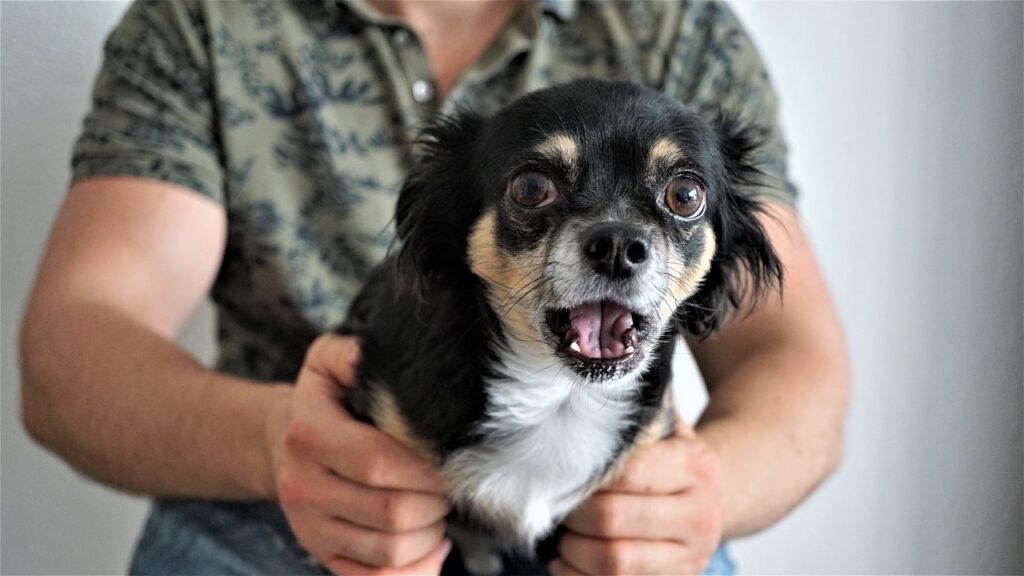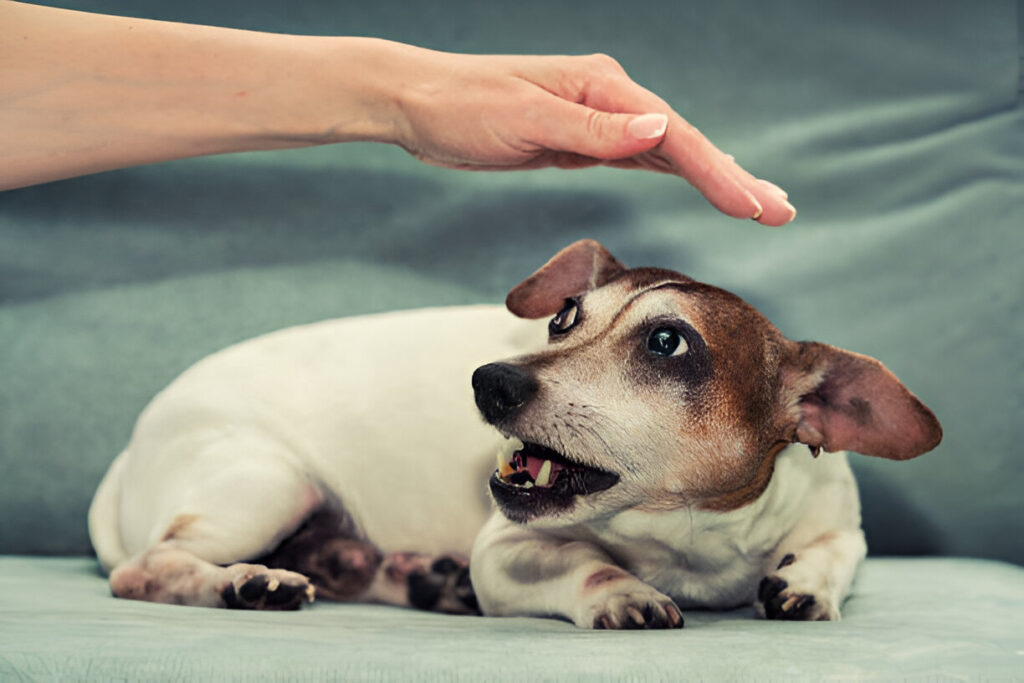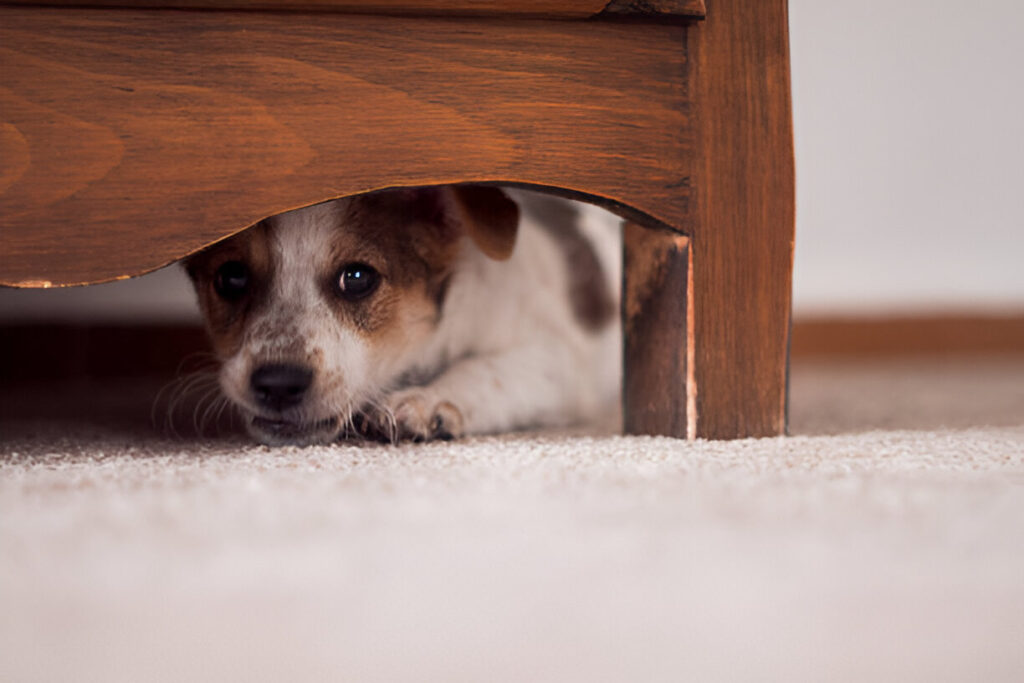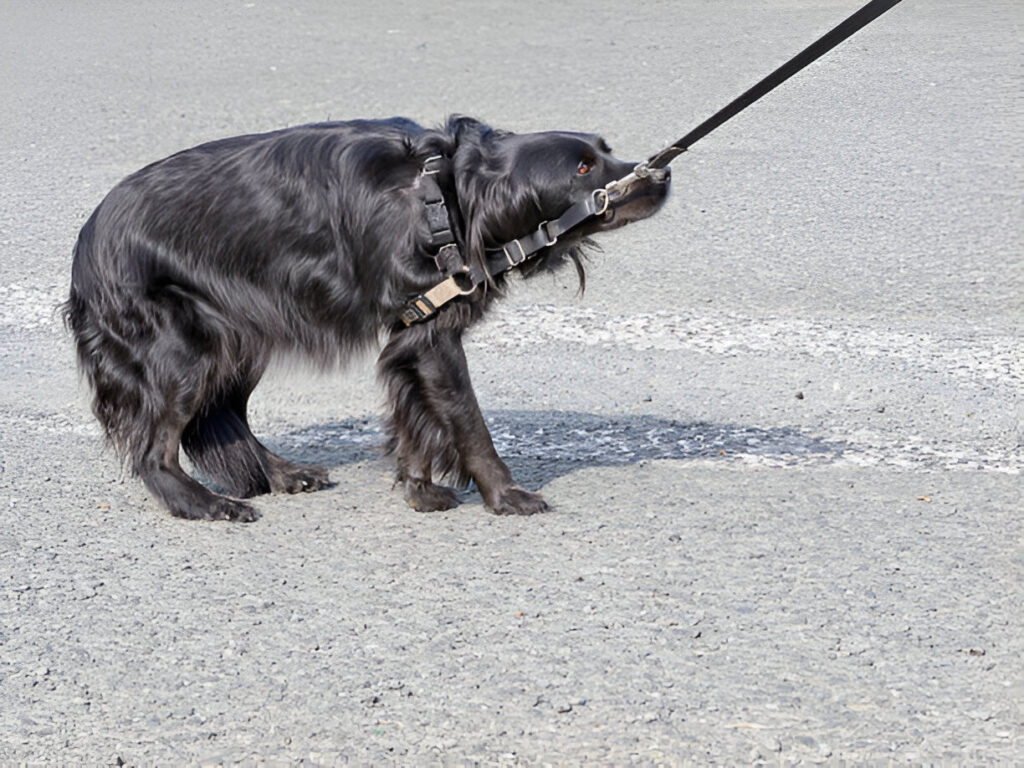Why Your Adult Dog is Suddenly Scared of Everything
Introduction:
Recognizing Sudden Fear in Adult Dogs
Dogs are loyal and brave, always standing by the side of their owner through thick and thin. But even the most fearless of dogs can develop instantaneous fears that often leave owners perplexed and concerned. These fears may suddenly emerge due to one or many factors that include changes in the environment, health problems, or traumatic experiences.
The most important things to do for your dog are recognizing the signs of fear and understanding its causes. An informed person with specific practical actions will get the necessary help for the furry friend in an effort to feel confident and safe once again.
Common Causes of Sudden Fear in Adult Dogs

Image by Myléne
Understanding the root of the sudden fear will provide the required insight into how to approach modification and management of the dog’s behavior. Below, some common triggers that may cause anxiety or fear in adult dogs are explained in detail.
Fear Triggers in Dogs
Dogs are very observant animals, and new fears can be learned by association with particular stimuli. While overt triggers such as thunderstorms or fireworks are well-recognized, more subtle ones can also cause fear. Examples include the following:
- Changes in Appearance: A new chair, different decorations, or items rearranged in a familiar room.
- Unusual Smells: Pungent odors from cleaning supplies, fragrances, or even new food for pets.
- Sudden Noises: Popping sounds, alarm, or construction noise outside.
These minor triggers may be inconsequential to human beings but become a source of great disturbance for a dog’s sharp senses.
Trauma-Linked Anxiety
Trauma-based fear is usually sudden and has no apparent association with any ongoing activity. Examples include:
- Negative Associations: A dog abused by any particular type of person, say men with hats, or loud-voiced individuals, may generalize the fear to include any others that resemble such past figures.
- Specific Situations: Various experiences, such as a car accident or a veterinary surgery, may result in long-lasting anxiety concerning similar contexts.
These fears can arise later in life when the dog reflects on his experiences or finds himself in a similar situation.
Health Issues Causing Fears
A dog’s physical health and mental state are inextricably linked. There are many undiagnosed medical conditions that can affect behavior, from sudden development of fears, generalized anxiety, or even changes in temperament. Understanding health-related reasons for fear can help the pet owner to identify when their dog’s behavior should be medically checked.
Sensory Loss
The dogs, while growing older, develop declining senses, especially in hearing and vision. Loss can make them disoriented or vulnerable to the surroundings.
- Hearing Loss: Dogs with reduced hearing may get startled if approached suddenly. They may misinterpret vibrations or muffled sounds as threatening.
- Loss of Vision: Diseases like cataracts or progressive retinal atrophy can cause impaired vision. The dogs will be very uneasy in poor light or new environments, as they cannot move around safely.
Since the loss of senses is generally gradual, the owner should look for an inability to respond to a visual or auditory cue, bumping into furniture, or reluctance to enter new rooms.
Neurological Disorders

Neurological issues deeply impact the dog’s perception and behavior; more often, this shows up in the forms of fear, confusion, or anxiety.
- Seizures: Epileptic or non-epileptic seizures have been known to disorient with fear before and after an event. The dogs may continue to be very restless, clingy, or anxious for no particular reason.
- Cognitive Dysfunction Syndrome (CDS): Sometimes referred to as “doggy dementia,” CDS is mainly confined to older dogs and may be manifested in symptoms like confusion, pacing, or even inability to recognize familiar people or environments. Such cognitive changes may provoke fear because of the inability of the dog to process what’s happening around it.
Timely diagnosis and management of neurological conditions can help alleviate the associated anxiety and improve the dog’s quality of life.
Chronic Pain
Pain is a significant stressor that can alter a dog’s behavior, making them more reactive, fearful, or withdrawn.
- Joint Pain: Arthritis, hip dysplasia, and ligament problems are various kinds of disorders that may cause chronic pain. The anticipation of pain could make the dog reluctant to perform certain activities, such as climbing stairs or even playing.
- Dental Pain: Chronic pain emanating from decaying teeth, gum diseases, or oral infections can affect the mood and behavior of a dog.
Internal Conditions: Gastrointestinal discomfort, kidney disease, or other organs may manifest as irritability or tenderness to the touch.
Owners should be aware that signs of pain, such as limping, changes in posture, a decrease in appetite, or sensitivity to handling, may signal health problems.
When to Seek Veterinary Consultation
If a dog suddenly becomes fearful or anxious without an apparent reason, then it should be considered as a medical cause. A change in behavior might be the only perceptible symptom of a medical condition and thus requires thorough veterinary examination.
- Diagnostic Tools: Bloodwork, imaging (X-rays or MRIs), and sensory evaluations may be done to rule out physical or neurological conditions.
- Treatment Options: Once identified, medication to treat the underlying cause, adjustment of diet, or any other pain management method usually reduces behaviors related to fear.
The proactive diagnosis and treatment of health problems has a better quality-of-life advantage for your dog and prevents most fearful behaviors.
Changes in the Dogs’ Environment and Daily Routines
Dogs are creatures of habit; their familiar environment being different or daily schedules disrupted can instill stress and anxiety. Some Key examples include :
- New Home: With new smells and sights, layout, etc, there can be too much disorientation.
- Additions to the Household: Adding a new pet, a baby, or even a guest staying longer may disrupt their sense of stability.
- Changes in the Owners’ Routines: A change in working time, holidays, or just days off may make the dogs feel insecure and alone.
Such changes can result in a clingy dog, a withdrawn one, or one that has destructive tendencies while they work out the new normal.
The Role of Past Experiences and Socialization

A dog’s behavior is very much influenced by the background and socialization of the animal in its formative weeks. Socialization can greatly help build up a dog’s confidence, adaptability, and capability to handle new situations. In contrast, negative experiences or lack of exposure may be linked to anxiety, fear, and behavioral problems later in life. How these factors affect or influence the feelings and behaviors of dogs follows.
Dog Socialization Problems
Socialization is a big period in early puppy development that happens between 3 to 14 weeks of life. It aids puppies in establishing their relationships with environmental elements, dogs, and even people. Anything less than well-executed could have lasting effects.
- Shyness and Nervousness: Dogs that haven’t viewed many things within their early months of life can easily become timid and/or wary of new circumstances that they encounter throughout their adult existence.
- Fearfulness toward Strangers: Being under-socialized toward numerous types of individuals may serve to make one’s dog skeptical, or scared of, most everybody else. Those who greatly differ from family-people wearing hats, sporting beards, or in different cologne or scent-could fit well into such scenarios.
- Environmental Sensitivity: A dog which has not been exposed to various environments, any change may be stressful and terrible for the dog, such as going to the park, at a friend’s house, or riding in the car. These are easily prevented with consistent, positive exposure to all manner of stimuli through the critical period of socialization.
Previous Trauma Effects on Dogs
Dogs that have suffered abuse, neglect, or harsh treatment could carry emotional trauma from these events. This can be manifested in several ways, considering the length and intensity of the negative treatment.
- Hyper-Vigilance: Dogs who have experienced trauma may be on guard continuously and scan for perceived threats around them.
- Fearful Reactions: Raised voices, objects like a broom, or fast movements can provoke some forms of fearful or self-defensive reactions.
- Avoidance or Aggression: The dog may avoid certain settings or individuals. Sometimes such animals may turn violent for self-defense reasons.
Rehabilitating a dog with traumatic experiences requires patience, consistent positive reinforcement, and sometimes even a professional trainer or behaviorist expertise.
Lack of Social Exposure
Even without overt trauma, dogs not socialized on a regular basis and variously can have their own share of behavioral problems.
- Fear of Other Dogs: A dog who has not been socialized to other dogs during the critical growth period may exhibit fearful or aggressive behaviors in park interactions or when on walks.
- Fearfulness of People: Poor exposure to people of various types, such as children, delivery folks, or loud groups, might make a dog unconfident or fearful.
Heightened Sensitivity: Dogs with limited experiences overreact to normally non-evented circumstances, such as a loud noise or the approach of a strange object.
Gradual, positive exposure to new experiences can help reduce fear and build confidence over time.
Socialization and Trauma-Related Fear
1. Socialization Training:
Introduce your dog gradually to new environments, people, and animals.
Positive reinforcement with treats and praise helps associate the new experience with a positive feeling.
Not bombarding him with too much stimulation at one time.
- Patience and Consistency Building trust means providing a dog with a secure, predictable environment.
- Never force a timid dog into certain situations where the dog is uncomfortable; give him time, and he will explore further with time. 3. Professional Help
- Call for professional help by an accredited trainer or animal behaviorist in traumas and fears which are heavy on your pet to handle.
- Consult a veterinarian for further medical advice because some dogs will benefit from medication to control their intense anxiety.
3. Enrichment Activities:
- Engage your dog in activities that help build confidence such as puzzle toys, agility training, or scent games.
- Regular exercise and mental stimulation reduce stress and encourage a sense of well-being.
Health-Based Causes of Fear

Canine Medical Issues Linked to Behavioral Changes
Physical health is inextricably related to a dog’s mental state. Hypothyroidism, chronic pain, and cognitive dysfunction syndrome (CDS) are medical issues that can manifest as new-onset fear or anxiety.
Indicators of Sickness-Based Anxiety in Dogs
Lacha appetite, heavy breathing, pacing, whining, or hiding signals anxiety due to a health problem. The sudden development of any form of fear requires a trip to the veterinarian to rule out organic causes of the behavior.
Veterinary Investigation for Anxious Pets
A proper veterinary medical check-up for the underlying diseased condition that may have caused the improvement in sudden fear should be considered. Blood tests may be prescribed to diagnose an underlying disease, imaging or neurological studies according to the case.
The Effects of Change in the Environment on Anxiety in Dogs
Environmental Causes that Stress Dogs
Any amount of change in a dog’s surroundings can unbalance them. Noisy construction work, addition of new members in a household, and even changes in furniture arrangement can easily stress them out.
Relocating with Your Dog
A change of address is one of the major anxiety-causing instances in dogs. New smells, new visual and auditory stimulation can easily push them into fear-based behaviors.
Effects of New Pet Introduction on the Existing Pets
A new pet brought into the home can alter the established dynamics, thus making the resident dog stressed or fearful. The dogs should be introduced to each other gradually in order to minimize anxiety, and they should be supervised.
Simple aids can include the creation of a ‘safe space,’ pheromone diffusers with a calming scent, and routine. Gentle massage or slow, soothing speech can also be comforting.
Professional Training for Fearful Pets
Yes, certified dog trainers specializing in fear and anxiety issues can teach owners how to help their dogs become confident. Positive reinforcement and gradual desensitization work well for overcoming specific fears.
Anxiety in Dogs: Behavioral Therapy
Severe anxiety problems are best treated by a veterinary behaviorist through behavioral therapy. A veterinary behaviorist employs changes in the environment, training, and sometimes medication to help a dog recover.
Reaching Out for the Help of a Veterinarian or a Professional Trainer

When to See a Veterinarian about Fearfulness in Dogs
If the dog’s fear is sudden, severe, or persistent, it is time to consult a veterinarian. The earlier the intervention, the better, to prevent the behavior from getting worse and to ensure an improved quality of life for your dog.
Benefits of Professional Dog Training Services
Professional trainers can give valuable advice based on your dog’s needs. They are able to help in finding triggers, employing strategies, and developing a long-lasting relationship with your pet.
Conclusion:
How to Help Your Dog Regain Confidence and Feel Secure at Home
The sudden development of fear in adult dogs is very distressing; however, it is possible for your furry companion to overcome anxiety with patience, understanding, and the right approach.
By determining the cause of the problem, seeking professional help if necessary, and using successful calming techniques, you will be able to help restore your dog’s confidence and make them feel safe and loved in their home environment.
Yuns Legdm is a passionate advocate for pet care and the founder of this website, dedicated to providing valuable information for fellow pet lovers and veterinary professionals worldwide. With a deep love for animals, Yuns created this platform to connect passionate pet owners with expert insights from veterinarians around the globe.
This website grows with you—the passionate pet owners and veterinary experts—creating a trusted space where knowledge, experience, and love for animals come together. Whether you’re seeking advice on pet health, nutrition, or general well-being, this platform is here to support you on your journey of responsible and loving pet care.








